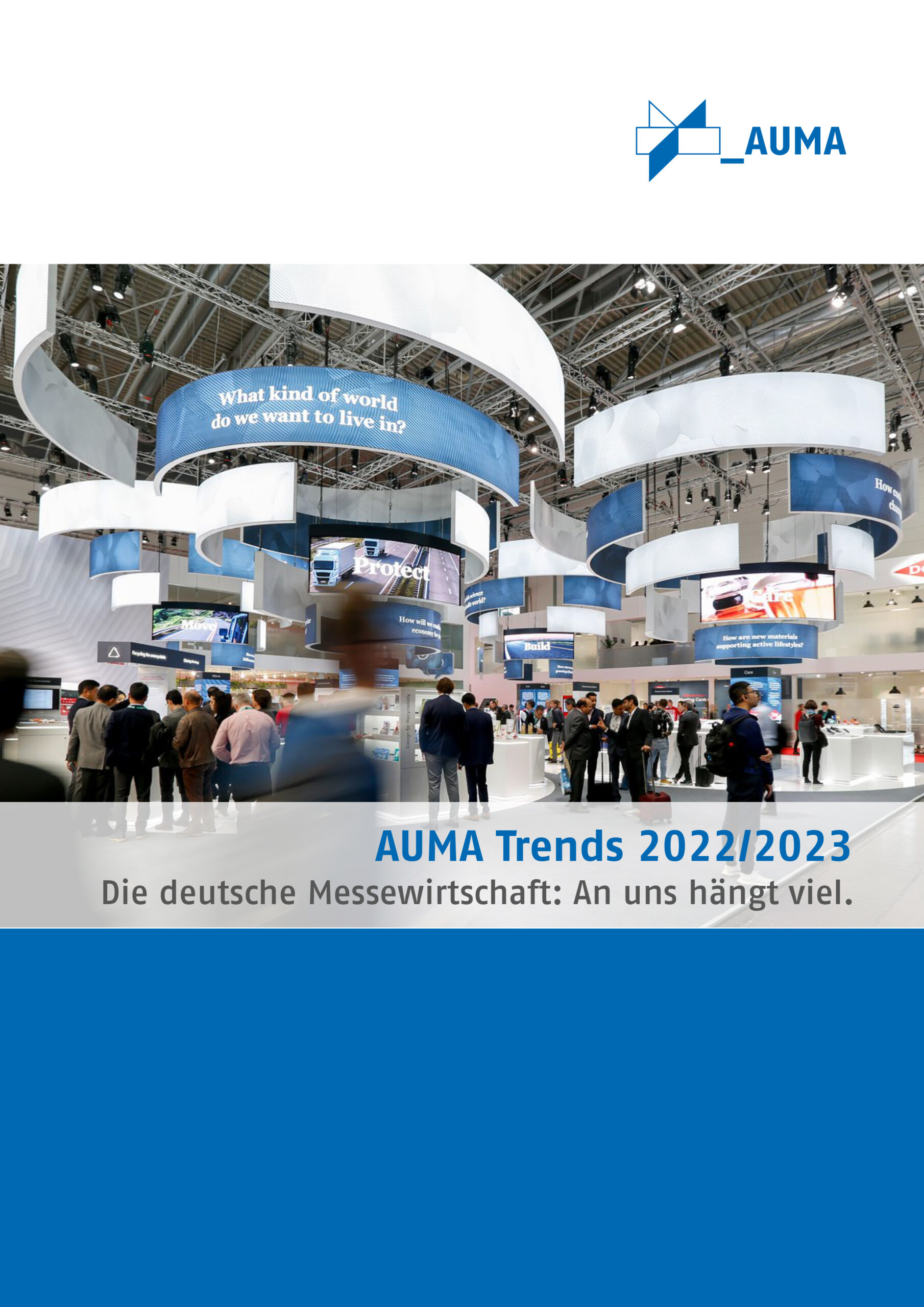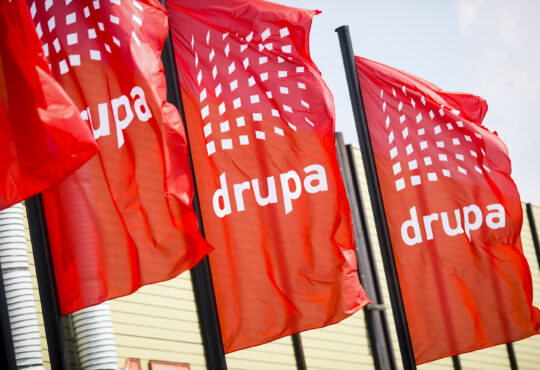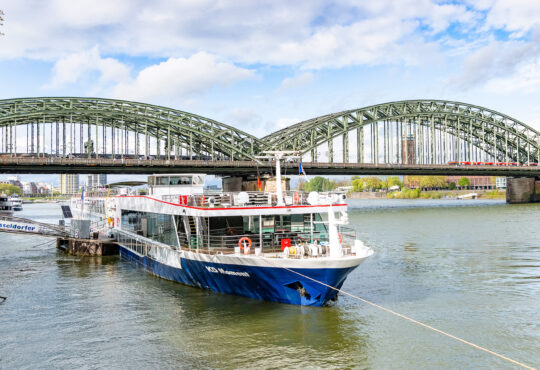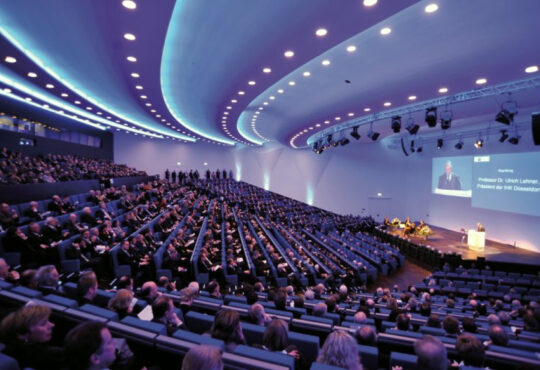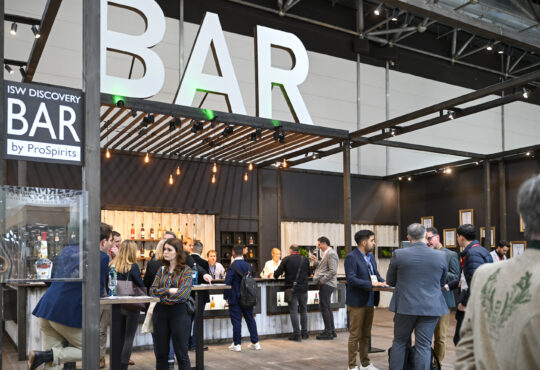“Pitching trade fairs as real highlights in the flood of digital content” – Interview with Hendrik Hochheim, Director Trade Fairs Germany
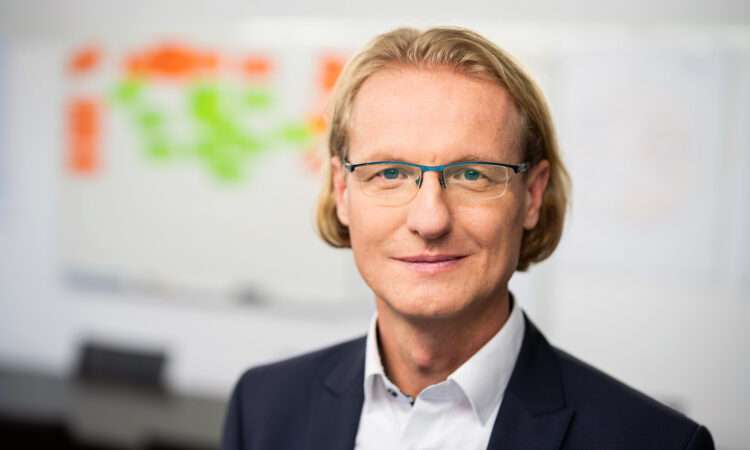
The Association of the German Trade Fair Industry – AUMA e.V. for short – has published the interactive brochure “AUMA Trends 2022/2023. The German trade fair industry: A lot depends on us.” This features ten views as well as testimonials from the exhibitions environment. We spoke to Hendrik Hochheim, Director Trade Fairs Germany at AUMA, about the findings featured in this publication.
As the association of the German trade fair business AUMA aims to position trade fairs as indispensable marketing tools and maintain the pole position of Germany’s trade fairs in the world – nothing short of a mammoth task during the Covid pandemic and geo-political conflicts.
Over the past couple of years the entire industry had the opportunity to demonstrate its flexibility and even Messe Düsseldorf reacted to the changes by establishing hybrid solutions such as glasstec VIRTUAL, virtual.MEDICA and virtual.COMPAMED or virtual.drupa. This is how we kept business going even against the backdrop of travel restrictions and contact bans. We, of course, also benefited from the fact that we already had such digital offerings as our Matchmaking-Tool ready to go thanks to forward-looking action or the relaunch of our exhibitor passes planned even before the pandemic hit. Needless to say, all parties involved voiced the wish to re-start the physical trade fair business; proof that trade fairs are still seen as the best place for presenting latest technologies and innovative products was impressively demonstrated at fairs like EuroCIS or the trade fair duo wire and Tube.
The medium of trade fairs will also be subject to constant change in future; because achieving digitalisation and sustainability targets will also present us with challenges over the coming years. All of these developments are not only on our radar – AUMA also never loses sight of them by maintaining regular exchange with key players in the trade fair business. The insights gained from these observations and conversations have been compiled in the Position Paper “AUMA Trends 2022/2023” on the future of the trade fair business – highly recommend reading and reason enough for us to talk to Hendrik Hochheim, Director Trade Fairs Germany at AUMA.
“Trade fairs are the communication events for their sectors again”
Editor: Starting with the #TradeFairMonthOfMay this summer has seen many exciting trade fairs and congresses: what is your conclusion regarding the re-start of the trade fair business?
Hendrik Hochheim (HH): Regarding that month the trade journal m+a Report commented on this: “The #TradeFairMonthOfMay has loosened many knots and is still having a liberating impact. First and foremost, however, it has shown what this industry is capable of, or rather is willing to deliver (even with restricted resources). This gives hopes for the time after the big dip …” I can only subscribe to this. Trade fairs are back and all parties involved realise just what has been missing without them.
#endlichwiederMesse/#TradeFairsAtLast: How is this feeling reflected most clearly to you?
HH: Regardless of the trade fairs I have toured over the past few weeks, the reactions were the same everywhere: at last we can meet in person again. I have rarely felt the pleasure derived from personal exchange so clearly. And despite all the benefits digital communication brings I had so many more take-home lessons from these face-to-face conversations than from any Teams or Zoom conference. And trade fairs have become THE communication forum for their industries again. As soon as a trade fair takes places it is covered by the media across all channels placing the respective industry in the limelight.
What do you expect for the trade fair business in autumn?
HH: Pent-up demand is enormous. For 2022 the calendar initially included 391 trade fairs for Germany, a new record value also resulting from last year’s postponements. Nonetheless, trade fairs will take quite some time to reach their high pre-Covid levels in terms of visitors, exhibitors and exhibition space. The industry expects to see a recovery in 2024 at the earliest, and even later as regards rented exhibition space.
In the second half of 2022 trade fairs are expected to produce macroeconomic effects amounting to just under EUR 9 billion. The prerequisite for this figure is a stable second half of the trade fair year. Prior to the pandemic we anticipated about EUR 28 billion.
What is most important now, however, is that policymakers create a stable framework. Restrictions for trade fairs such as upper limits for attendance or even bans should no longer form part of politicians’ tool kits. Without planning security the uncertainty in the sector will continue.
“Sustainable trade fairs – probably the biggest challenge in coming years”
To what extent will the big challenges faced by the exhibiting industries – digitalisation and sustainability – also continue to play a prominent role for the trade fair business?
HH: Digitalisation and sustainability are two mega themes, for society at large and, of course, also for trade fairs. Trade fairs are oriented towards their customers’ needs. All in all, trade fair planning will become more complex for both exhibiting companies and trade fair organisers since digital and analogue formats will be more closely connected. This comes with new requirements and calls for additional investment in technology and skills-building for staff. The last two years have shown where digital tools make sense and are helpful. With this experience behind us, however, I see a broad-based digitalisation of processes rather than of trade fairs.
Sustainability is omnipresent in all spheres of society. The current discussions about energy security and costs show the urgency of this theme. Organising trade fairs sustainably is probably the biggest challenge in coming years. Many companies, organisations and associations in the exhibitions and event business have joined the “Net Zero Carbon Events” initiative and support the targets of the Paris Climate Agreement.
During the pandemic digital and hybrid trade fair formats were on the advance: what does this mean for face-to-face events?
HH: The pandemic has produced new digital habits. As soon as physical trade fairs became possible again, however, demand for purely digital formats dropped drastically. But one thing is for sure: trade fairs will have a far higher share of digital content. Digitalisation helps trade fair organisers tremendously to create added value for exhibitors and visitors – be it in community building or co-creation.
Via “digital bridges” attendees can reach out to new target groups while those exhibitors and visitors not prepared to travel for an initial impression can still “attend”. However, new ties, innovative cooperation and long-term relations are the result of real encounters: and these are only provided as “a package” at live events. At the same time, trade fairs are put to the test as business models. After all, digital offerings do not fill exhibition halls. The challenge now is to pitch trade fairs as real highlights amongst the flood of digital content.
Are there any developments in the industry that we might copy and where is Germany the pioneer in the trade fair business?
HH: Germany is the No. 1 trade fair country. No other country hosting trade fairs boasts such high international attendance. Exhibitors and visitors come to Germany from all over the world. Furthermore, trade fairs serve as a preferred meeting point for small and medium-sized companies here. Nine out of ten exhibitors at German trade fairs have less than 500 employees. Our SMEs are the mainstays of Germany’s economic success. These hidden champions find nearly 70 trade fair destinations on their doorstep which connects them with national but especially also international markets. So exports start right “from the doorstep” – trade fairs made in Germany are attractions the world over.
Looking abroad, however, also reveals developments that are exciting for us. Conventions with a focus on community-building rather than the rented area are an interesting point of departure for developing trade fairs further.
You have just issued a publication on the future of the trade fair business: what will the trade fair industry look like in 10 years from now?
HH: In 10 years from now no trade fair will look the same. As no trade fair in 2022 looks like the ones in 2012. Trade fairs have always been a mirror of their industries. Change has been their constant companion. What remains unchanged though is that trade fairs are the place for emotions, the first point of contact for generating leads, the marketplace for business – in one place, in the same time zone, the climax of the sectoral cycle. I look forward to these changes with anticipation!
Thank you very much for this interview, Mr Hochheim.
And what expectations do you have for trade fairs in the future? Let us know in your comments!
Information on the publication “AUMA Trends 2022/2023”
The German trade fair business: A lot depends on us.
Digital brochure, AUMA (publ.), 24 pages, June 2022.
Web version | Download | More information
Image source (header): AUMA/Steffen Kugler




